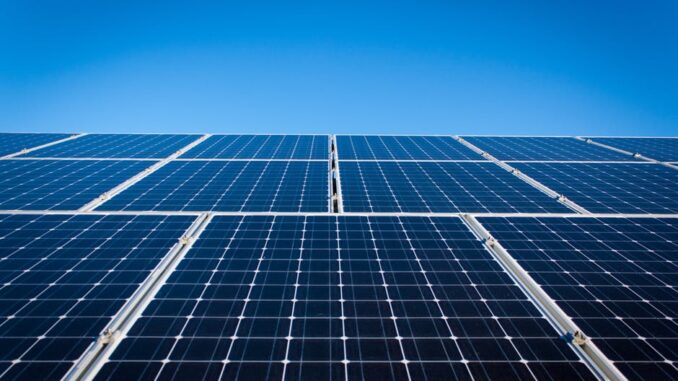Witness to the visible rush of solar energy developments pitched for the region, a local group believes there needs to be a more cautionary approach to the consenting process.
There are many keen to kickstart Wairarapa’s renewable energy movement, with Carterton District Council recently approving the region’s first development, a small-scale solar farm on Norfolk Rd.
Also in the works is an application from Far North Solar Farm for a Greytown development on Bidwills Cutting Rd, a project from the UK-based Harmony Energy going through the central government’s fast-track consenting process, and a third proposal made public last year by Helios Energy [also for Bidwills Cutting Rd] but yet to be submitted.
Greytown resident and secretary of community group South Wairarapa Whenua Action Group [SWWAG] Dayandra Hettige said they are worried hastened solar developments could bring a number of their own issues with them.
Hettige said there needs to be more consideration from consenting authorities around the safety and environmental impact of solar intensification.
“It’s all to do with location,” Hettige said.
“We are not objecting to renewable energy solutions, I want to make that clear. This has to do with the serious impacts which could result from this unregulated activity.”
Hettige – a professional electrical engineer and part of the 1993 team installing New Zealand’s first commercial wind generator in Brooklyn Wellington – said the close proximity of Far North Solar Farm’s development [should it be approved] to Greytown’s township could have devastating effects on the land quality.
A primary concern for Hettige was fire risk, citing several incidents overseas involving solar blazes.
Hettige said that in an uncontrolled blaze in Greytown, the toxic materials making up solar infrastructure could leach into the ground.
“Solar farms are not benign in nature, they have toxic components in them,” Hettige said.
“Modern solar panels have heavy metals and rare earth materials in them, so these fires are very toxic.”
Hettige said he doesn’t believe the council has considered a “major impact resulting from a catastrophic fire” that could emanate from faulty componentry, lightning strikes or scrub fires.
“Such an event will lead to the closure of SH2 and Bidwills Cutting Rd,” Hettige said.
“Taking the fire scenario to another level, the toxic plumes of smoke will trip the Transpower 110 KV line causing power outages with significant restoration time.
“Pupils of Kuranui College and Greytown School would have to be evacuated.”
As solar fires would need to be treated with a chemical-based fire retardant, Hettige said the addition of this retardant into the land would “pose a significant threat for generations to come”.
In an even more extreme example, Hettige said a fire would also pose a risk to Greytown’s drinking water supply.
“You need special chemicals to put these fires out, and if these chemicals get into the groundwater system, the soil needs to be removed for remediation,” Hettige said.
“All of us in Greytown get our drinking water from bore water. Problems will be compounded if toxic materials are released to town aquifers.”
The reason the Bidwills Cutting Rd site is attractive for solar development is its proximity to the national grid, an issue Hettige said should be addressed by Transpower, owner and operator of the national electricity grid.
“Transpower needs to come to the party and put a grid connection to the lines somewhere further away,” Hettige said.
“They are allowing people to hook up to the grid, where people are living close by, and not considering some of the things of a toxic nature if something goes wrong.”
Internationally, regulation on solar is heating up.
Solar farms in America are usually destined for large, already contaminated or unproductive areas of land, such as barren deserts away from civilisation.
Hettige said in Australia, there were guidelines stating solar developments have to be 500m away from any main highways.
“If that rule applied here, the project in Greytown could not go ahead.”
Hettige said it was a large risk to develop a project of this nature on what is currently productive land, as any contamination would have irreversible effects on the site’s health.
“They want to put it on fifth-generation farmland, and they’re sharing nice photos with sheep underneath the panel,” Hettige said.
“There’s a lot of greenwashing going on here.”
Another concern of note was noise pollution, as while screening and landscaping could help bar the low-grade hum emitted from inverters, it could still impact people who live nearby.
Hettige said there also needed to be plans implemented for future disposal methods once the infrastructure meets the end of its shelf life.
“Where will those panels end up?” Hettige asked.
“They can’t go to a landfill. We don’t want to be in a situation where they’re exported to a third-world country and polluted there.”
“There has to be a plan provided by developers for the end-of-life recycling of massive numbers of toxic photovoltaic cells and associated electrical plants.”
Hettige said SWWAG had requested a fire mitigation and management plan for a photovoltaic power generating plant of this magnitude.
He said the new-ness of renewable energy meant there was a high influx of developers trying to reach the market while regulation was lacking.
“In New Zealand, there is no precedent for a photovoltaic generating plant of this magnitude installed so close to human habitation and on valley floor farmland.”
“It therefore behoves both the developers and regulating government authorities to ensure a true environmental impact can be evaluated by both specialists and lay people.”

